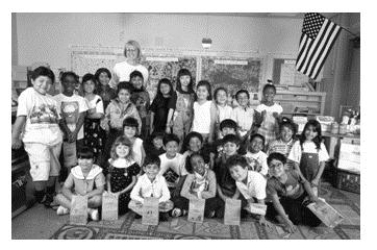Multiple Choice
In a research study on false memories, psychologist Stephen Lindsay showed half the participants their actual first-gradeclass photo, like the one shown here, and asked them to read adescription of a prank that supposedly happened in firstgrade. What was the effect of looking at the photo? 
A) The rate of false memories was same regardless of whether participants looked at their first-grade photo or not.
B) Looking at the photo greatly reduced the likelihood of producing a false memory.
C) Looking at the photo greatly increased the likelihood of producing a false memory.
D) Participants who did not look at the photo were much more likely to produce false memories than those who looked at the photo.
Correct Answer:

Verified
Correct Answer:
Verified
Q43: "Cramming" is highly recommended to enhance long-termretention
Q44: Memory consolidation occurs during REM sleep but
Q45: Research has consistently shown that, like photographs,flashbulb
Q46: Research has shown that the bits and
Q47: The experience of déjà vu is a
Q49: British psychologist and memory researcher Alan Baddeley
Q50: Maintenance rehearsal is a very effective strategy
Q51: Professor Sheehan spent most of the class
Q52: Although research has plainly shown that so-called
Q53: There is no evidence for a specific